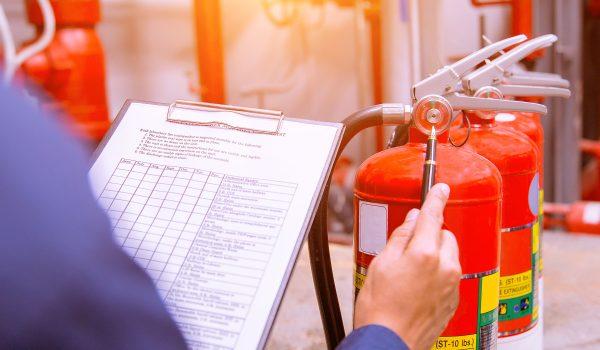As you walk into your workplace, have you ever stopped to think about the potential fire hazards lurking in every corner? It’s easy to overlook them, but the consequences of a fire breaking out can be devastating. That’s where a fire safety consultancy comes in – to identify those hidden dangers and help you take proactive steps to prevent them. By working with a consultancy, you’ll be able to pinpoint risks, develop emergency plans, and implement vital safety measures. But what specific steps can you take to ensure your workplace is fire-safe, and what are the benefits of investing in a consultancy’s expertise? Fire extinguisher installation and maintenance.
Identifying Fire Hazards in Workplace
Several hundred fires occur in workplaces every year, resulting in injuries, fatalities, and significant property damage.
You’re probably thinking, “How can I prevent this from happening in my workplace?” Identifying fire hazards is the first crucial step in mitigating the risk of a fire breaking out.
You need to be vigilant and identify potential fire hazards in your workplace. Take a walk around your premises and look for anything that could catch fire, such as electrical equipment, hot surfaces, or flammable materials.
Are your employees smoking in designated areas? Are there any sources of ignition near flammable materials? Are your storage areas cluttered, creating a fire hazard?
You should also check if your fire alarms and extinguishers are functioning properly.
Remember, identifying fire hazards is an ongoing process, and you need to stay alert to new risks that may arise from changes in your operations or processes.
Conducting Thorough Risk Assessments
Now that you’ve identified potential fire hazards in your workplace, it’s time to take a closer look at each of them to understand the level of risk they pose.
This is where conducting thorough risk assessments comes in. You’ll need to evaluate each hazard, considering factors like the likelihood of a fire occurring, the potential consequences, and the number of people who could be affected.
You should also assess your existing control measures, such as fire alarms, sprinkler systems, and emergency exits, to determine their effectiveness in mitigating the risks.
Don’t forget to consider the human factor, too – are your employees trained to respond appropriately in the event of a fire? Are they aware of the emergency procedures?
Developing Emergency Evacuation Plans
With your risk assessments in hand, you’re ready to develop a comprehensive emergency evacuation plan, a crucial component of your overall fire safety strategy.
This plan should identify escape routes, assembly points, and emergency response procedures. You’ll need to designate a team of fire marshals or evacuation coordinators to oversee the evacuation process and ensure everyone reaches a safe zone.
Next, you’ll need to create a clear and concise communication plan to alert employees in case of an emergency.
This may include alarm systems, public address systems, or even mobile apps. Make sure all employees understand their role in the evacuation process and know what to do in case of a fire. You should also establish a system for accounting for all employees once they’ve reached the assembly point.
Implementing Fire Safety Measures
Implementing Fire Safety Measures
Every facility is unique, and so are its fire safety needs.
You’ll need to identify potential fire hazards and take steps to mitigate them. This might involve installing fire alarms, sprinkler systems, and emergency lighting. You should also ensure that all electrical equipment is well-maintained and that flammable materials are stored safely.
In areas where hot works are performed, you’ll need to implement additional safety measures, such as fire blankets and extinguishers.
You should also designate fire marshals who’ll be responsible for ensuring that fire safety protocols are followed.
Fire safety measures should be integrated into your daily operations.
This means conducting regular fire drills and providing fire safety training to all employees.
You should also have a system in place for reporting and addressing fire safety concerns.
Maintaining Compliance With Regulations
Your facility’s fire safety measures are only as effective as your commitment to maintaining compliance with regulations.
You must stay up-to-date with changing laws and standards to ensure your workplace remains a safe environment for employees and visitors. A fire safety consultancy can help you navigate the complex web of regulations, ensuring you meet all necessary requirements.
They’ll conduct regular audits to identify areas of non-compliance, providing you with a comprehensive report outlining recommended improvements.
This proactive approach helps you avoid costly fines and penalties associated with non-compliance. Moreover, a consultancy will assist in developing a compliant fire safety policy, tailored to your facility’s specific needs.
They’ll also provide training for your staff, empowering them to take ownership of fire safety and respond effectively in emergency situations.
Conclusion
You’ve taken the first step towards a safer workplace by recognizing the importance of fire safety. Now, it’s time to take action. By working with a fire safety consultancy, you can identify and mitigate fire hazards, develop a robust emergency plan, and ensure compliance with regulations. With their expert guidance, you’ll be empowered to create a fire-safe environment that protects your employees, assets, and reputation.

